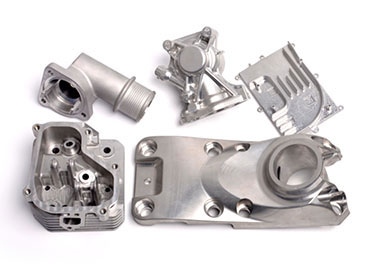When using machine tools to process steel parts, some processing methods are often used. Examples include changing the properties of steel and making it easier to process, and treating steel after processing to increase the strength or hardness of the finished product. Three common steel processing techniques are as follows.

Heat treatment refers to several different processes that involve manipulating the temperature of steel to change its material properties.
Annealing reduces hardness and increases ductility, making the steel easier to work. Annealing is a process in which steel is slowly heated to the desired temperature over a period of time. The time and temperature required depend on the specific alloy and decrease as the carbon content increases. Finally, the steel is cooled slowly in the furnace.
Normalizing can reduce the internal stress of steel while maintaining higher strength and hardness than annealed steel. During the normalizing process, the steel is heated to a high temperature and then cooled at a suitable temperature to increase the hardness of the steel.
Quenching, hardens the steel, increasing its strength but making it more brittle. In the quenching process, the steel is slowly heated, and after a period of time, the steel is quickly cooled by immersing it in a liquid such as water, oil, or salt water solution.
Tempering reduces the hardness of steel and increases its toughness. Tempering is similar to normalizing. The steel is first heated to a set temperature, maintained for a period of time, and then cooled naturally. The difference is that the tempering temperature is lower.
Precipitation hardening increases the yield strength of steel. To activate precipitation hardenability, the steel is first solution treated and then age hardened. The strength of the material is increased by the age hardening process – heating the material over a long period of time to create precipitates that form solid particles of various sizes.
17–4 PH (aka 630 steel) is a common example of a precipitation hardening grade of stainless steel. This alloy contains 17% chromium, 4% nickel and 4% copper. Due to its increased hardness, strength and high corrosion resistance, 17–4 pH is used in helicopter platforms, turbine blades and nuclear waste barrels.
Modification can also change the properties of the steel without adding too much heat. For example, cold worked steel becomes stronger through the process of work hardening. Work hardening occurs when a metal undergoes plastic deformation. This allows you to intentionally hammer, roll or pull metal. Workpiece hardening can also occur intentionally during machining when the cutting tool or workpiece is exposed to high temperatures. Cold working also improves the machinability of steel. Cold working also improves the machinability of steel.
Steel structure design issues
When designing steel parts, it is important to keep in mind the unique properties of the material. The right functionality for your application may require some additional design for manufacturing (DFM) considerations.
Due to the material’s hardness, machined steel will last longer than other softer materials such as aluminum or brass, and you can protect your parts and tools by reducing spindle speed and feed rates.
When deciding which steel to use, workability as well as differences in hardness and strength must be considered. For example, stainless steel takes approximately twice as long to process as carbon steel. When deciding between different grades, it is necessary to consider which properties are most important and which steel alloys are readily available. Common grades such as 304 or stainless steel 316 are available in a wider range of stock sizes and require less time to find and source.
This article discusses 3 common techniques for processing steel. If you would like to learn more please contact a PROTO MFG sales representative.
PROTO MFG provides a wide range of manufacturing capabilities and other value-added services for all of your prototyping and production needs. Visit our website to learn more or to request a free, no-obligation quote.